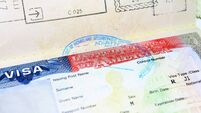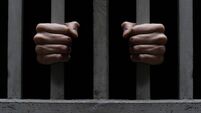Facing down the global shocks of Greece and China

The early part of the year was dominated by the Greek situation.
A huge question mark hung over the ability and willingness of the Greeks to remain within the single currency and this inevitably gave rise to considerable uncertainty in financial markets.
The left-wing government had many trials and tribulations.
The flamboyant finance minister left the government and a general election was held in September, which the incumbent prime minister won.
He then proceeded to capitulate on many of the promises that he had made and eventually acceded to the wishes of international creditors.
When push came to shove, the Greeks obviously feared the consequences of delivering on earlier political promises, which inevitably would have resulted in the country being forced to exit the system.
In the final third of the year, Greece faded from the headlines and was replaced by China as the big issue.
In early August, China devalued the currency in a move that took the markets by surprise.
This sent out a very strong signal about just how concerned the Chinese authorities have become about the slowdown in the economy that has been building for some time.
In many ways, China is just the latest iteration of the global crisis that began in 2007 and which is still dictating global economics.
The Chinese growth story had been driven heavily by strong inward investment flows from the developed world, and in turn strong growth in export sales to those countries.
Given the magnitude of the Great Recession of 2007, it was inevitable that investment flows would slow and export growth would be damaged.
In addition, various bubbles that had developed, particularly in the construction sector, started to deflate, as they generally do.
The economy has effectively moved from double-digit growth rates to a pace of close to 6% at the moment.
Such a growth slowdown is akin to near-recessionary conditions.
This scared the markets and I think we will hear a lot more about China in 2016.
Another key development over the past year was the further sharp decline in oil and commodity prices.
The price of a barrel of oil has fallen by over 41% over the past year and ended the year under extreme pressure.
The slowdown in demand from China was a key driver, but the substitution of oil with alternatives such as wind, solar, and fracking also impacted.
In response to this, Opec continued to pump supply at very high levels to keep the economics of alternatives to oil under pressure.
The decline in commodity prices is having an impact on many emerging economies and this will become a theme in 2016. Irish dairy farmers felt these forces.
On the interest rate front, not a lot happened, at least until very late in the year.
ECB rates remained at rock-bottom levels, reflecting the lack of growth momentum in the eurozone and the total absence of any inflationary pressures.
In March, the ECB announced its programme of quantitative easing.
In the UK, despite the solid performance of the UK economy, the Bank of England did not deem a rate increase necessary.
In contrast, the Federal Reserve eventually pulled the trigger this week, when it sanctioned the first interest rate increase since 2006.
The 0.25% increase is small in magnitude, but signals that the era of historically low interest rates is drawing to a close, at least in the US. US rates will rise further in 2016.
On the geopolitical front, it was a scary year.
Tensions with Russia continued, but events in Syria and the growing power and evil intentions of Islamic State send a scary message about what is in store for 2016.
Meanwhile, here in Ireland, it turned out to be a pretty decent year.
Ireland was helped enormously by ECB policies, the decline in oil prices, the weakness of the euro and the relative strength of the US and UK.
Those factors look set to remain in place in 2016, but politics is what will really dominate the first half of 2016 in Ireland.













